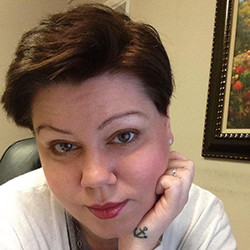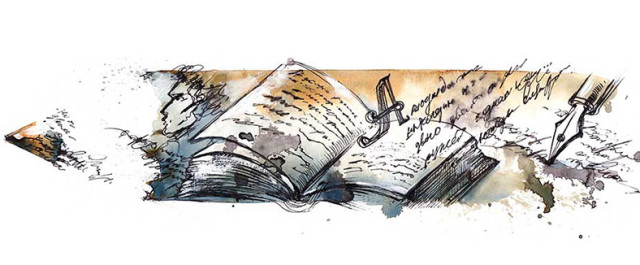Arlia Frink
There are days when my introverted nature barricades myself inside the house, brews a small (but potent) pot of coffee, turns the cell phone off (I mean, actually off, and not the do-not-disturb-off), starts the vinyl spinning, and wallows in the creative process of writing. And then there are those moments the extroverted tendencies of my nature propel me to seek community with others tackling this lovely adventure we call creating art.
One such episode of extroversion found me as a participant at my alma mater’s undergraduate humanities conference contributing to a round table discussion of creativity and humanities last month. That is all we (two professors, one alumna, one current student) were told about the round table: creativity and the humanities. This discussion could travel to any destination. This discussion could ask, tell, seek, excavate the loftiest of paradigms or the shallowest of concepts. Who knew, this discussion might even inspire some apathetic undergraduate student to ardently pursue a humanities field (dare we hope?). Intellectual and artistic stimulation at its finest, my friends, at its absolute finest.
For almost two hours, students and professors from a mixture of regional institutions, fields of study, diverse demographics, volleyed ideas and queries back and forth. Questions led to comments led to questions led to audience participation led to notations on paper and then more commentary. What and how do we personally define creativity? Can creativity be taught or learned, nurtured or cultivated? Is is innate? Is there a difference between analytical and creative thought? If there is, can they be separated? What qualities are essential to creativity, to the creative process? If there is artistic merit and beauty in science and math, then why do most call them the dichotomous sibling of the humanities? Can the creative desire be stifled or destroyed? Oh, what questions. And oh, what responses.
As party to this discussion, the opportunity I was afforded to witness both the inklings of philosophical thought and the wisdom of those more experienced, was richly satisfying. For this round table discussion demonstrated one of my favorite aspects of an artistic and academic environment: community. There is risk in exploring and exposing the creative process, regardless if that process concerns playing with language or manipulating computer code. There is even greater risk when that exposure and exploration is organic and fluid, because the lack of structure also brokers a lack of control (and let’s face it, most of us enjoy having a modicum of control). But when individuals gather to form a community, however briefly, the weight of that risk is often lessened—shared weight produces comfort. Shared community also produces quite a bit of laughter, as I discovered that day too.
And isn’t that simply a lovely aspect of this adventure? To share, to learn, to gather a supportive community where available, and to laugh as you each navigate the intricacies of crafting something of quality and worth? As you each pursue the clearest expression of your aim? If that’s not exquisite, then at least let it prompt a response along those lines.
 Arlia M. Frink currently attends Converse College’s Low-Residency MFA Program. She is a nap, music, and coffee aficionado, who occasionally dabbles in radio broadcasting and children’s story-time at area schools. A Yankee-hybrid, she lives in Darlington, South Carolina, where it is impossible to purchase Cream Of Wheat.
Arlia M. Frink currently attends Converse College’s Low-Residency MFA Program. She is a nap, music, and coffee aficionado, who occasionally dabbles in radio broadcasting and children’s story-time at area schools. A Yankee-hybrid, she lives in Darlington, South Carolina, where it is impossible to purchase Cream Of Wheat.
